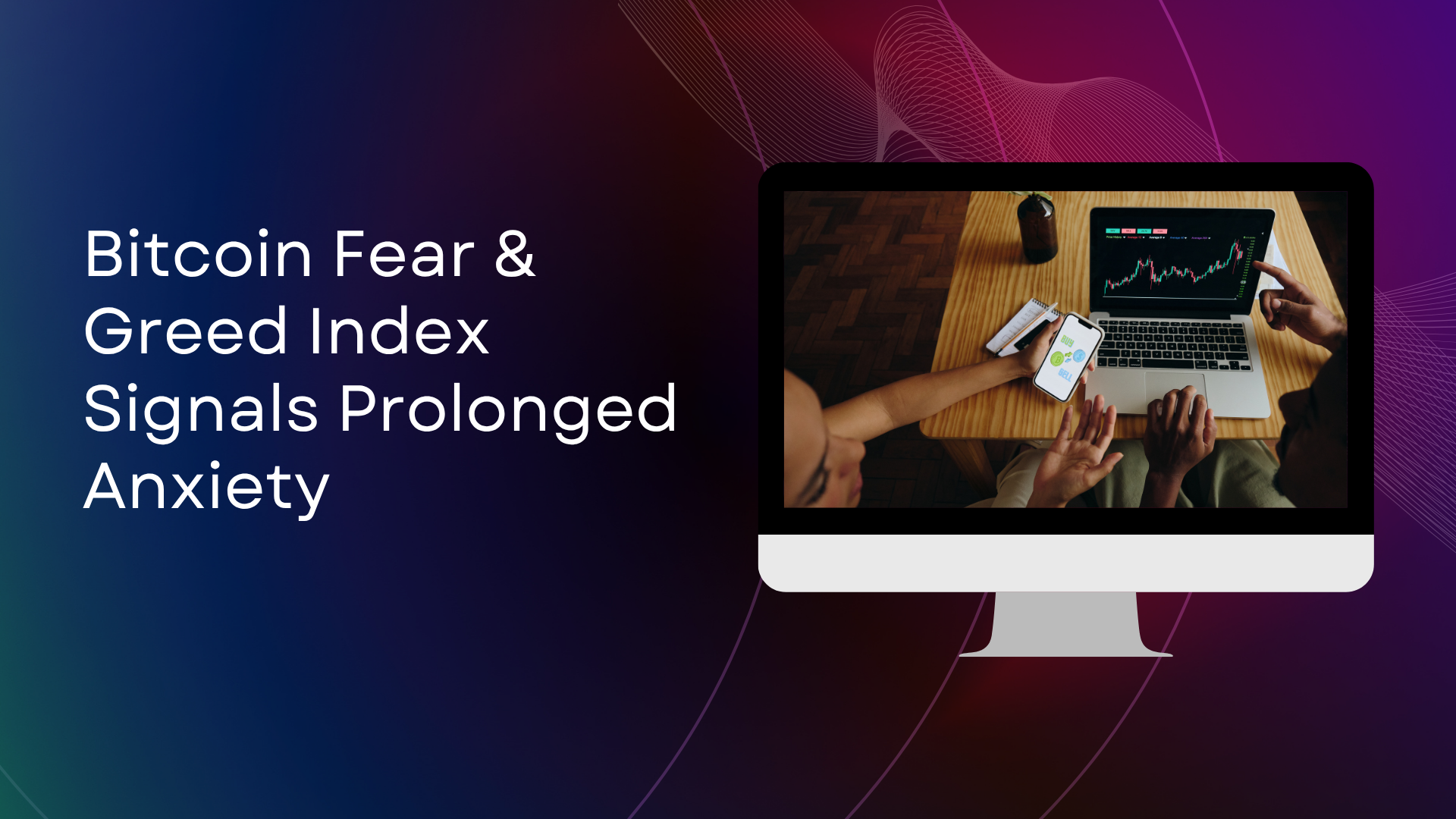
The crypto market is stuck in a wary mood. CoinDesk’s markets team notes the Bitcoin Fear & Greed Index has remained in the “fear” zone for seven straight days while price action chops in tight ranges—an unusual stretch that could point to prolonged anxiety rather than a quick relief rally. The piece also highlights a rising choppiness profile (a proxy for trendlessness), a combination that tends to weigh on risk-taking until a decisive catalyst resets the tape.
What the index is actually measuring
The widely followed meter—built by Alternative.me—compresses a set of inputs into a 0–100 score, where 0–24 is “extreme fear” and 50 is neutral. Components include price momentum, volatility, social activity, dominance, and Google Trends. In practice, the tool is less a trading signal and more a context gauge: sticky fear says positioning is cautious and risk appetite is thin, which can increase the impact of headlines and order-book shocks.
CoinDesk’s read is consistent with the historical series: when the meter sits at fear for multiple sessions, markets often base messily before trend resumes—up or down—rather than snapping back immediately. Traders watch changes more than levels: a grind from fear toward neutral can attract sidelined capital, while fresh dips into extreme fear can precede capitulation or “one more flush.”
Why nerves are sticky this time
1) Options are in the driver’s seat.
Crypto’s forward-looking volatility gauge—the Deribit Volatility Index (DVOL)—tracks 30-day implied volatility from options. Elevated DVOL tells you dealers are pricing bigger swings ahead, and that hedging flows can amplify spot moves. That dynamic was already on display earlier this quarter as DVOL jumped off summer lows, a pattern CoinDesk has called out repeatedly.
2) Liquidations keep whipsawing confidence.
Periodic bursts of forced unwinds in perpetuals have peppered the tape. Real-time dashboards like CoinGlass show how quickly hundreds of millions can be wiped when direction flips—fueling the sense that rallies and dips are “not to be trusted.” Even when total daily liquidations are modest by historical standards, the frequency of smaller waves can maintain a background hum of caution.
3) Range plus fear = participation problem.
When price compresses and sentiment is downbeat, liquidity providers tend to widen spreads and shrink size. That makes air pockets more likely, which in turn keeps sentiment depressed—a circular loop that needs either a macro catalyst or a clean technical breakout to break.
What traders are watching
CoinDesk’s analysis pairs the fear streak with a rising “choppiness index” reading (via CheckonChain), suggesting trendlessness has taken hold just as mood soured. The editorial takeaway is cautious: without a new impulse—ETFs seeing decisive net creations, a macro shift, or a clear reclaim of major moving averages—anxiety can linger even if prices don’t fall apart.
A companion CoinDesk update underscores this backdrop: on the same day, both bulls and bears lost roughly $300 million in liquidations as price spiked and then faded—quintessential range-bound behavior that punishes conviction on both sides and keeps the Fear & Greed meter pinned.
How to read the signal without overreacting
- Treat it as a throttle, not a trigger. A week of “fear” argues for smaller sizing and selective setups, not hero trades. Historically, the index has been more useful for risk pacing than for picking tops and bottoms.
- Watch the direction of change. If the meter crawls toward neutral while DVOL drifts lower, that combination often precedes healthier trend formation. If fear deepens as DVOL climbs, expect bigger intraday ranges and more stop-outs.
- Cross-check with positioning. Rising options open interest relative to futures (and vice versa) can signal where hedging flows might bite. CoinDesk’s recent coverage points to options metrics playing an outsized role in day-to-day direction.
What would flip the script?
Clear catalysts: sustained spot ETF inflows, a macro tailwind (e.g., benign inflation prints or a friendlier rate path), or a technical reclaim of well-watched moving averages with follow-through volume. Any one of these can pull the index out of fear by improving participation and tightening spreads.
Or, a cathartic flush: paradoxically, another liquidation wave that swiftly resets leverage can shorten the anxiety window—if it is followed by stabilization. Business-press roundups this fall documented multi-billion-dollar wipeouts across derivatives that ultimately cleared the way for steadier price action; the risk, of course, is overshoot.
The conclusion
A week of “fear” on the Bitcoin Fear & Greed Index doesn’t guarantee more downside—but it does suggest a market that needs new information before it can trust a trend. With implied volatility still punchy and liquidation spikes popping up on cue, traders are leaning defensive and waiting for confirmation rather than chasing every bounce.